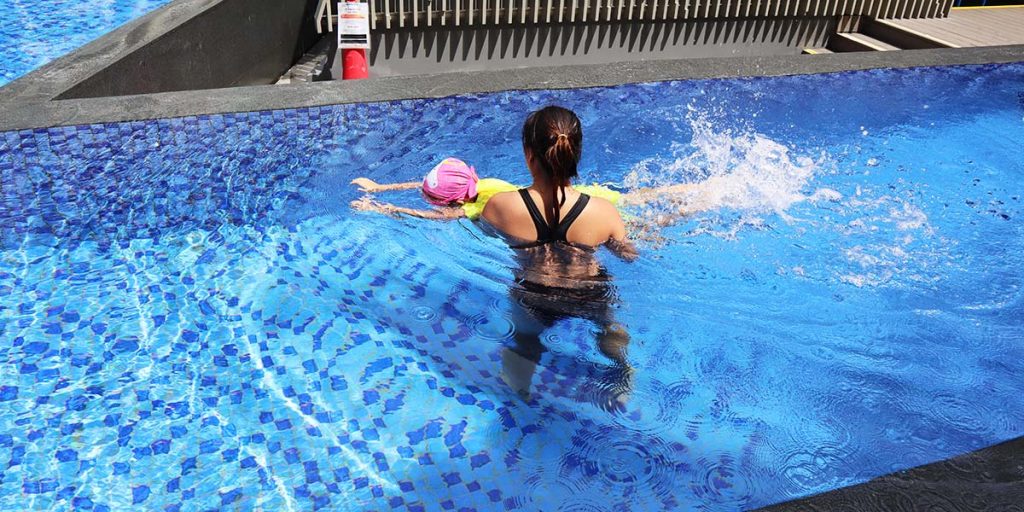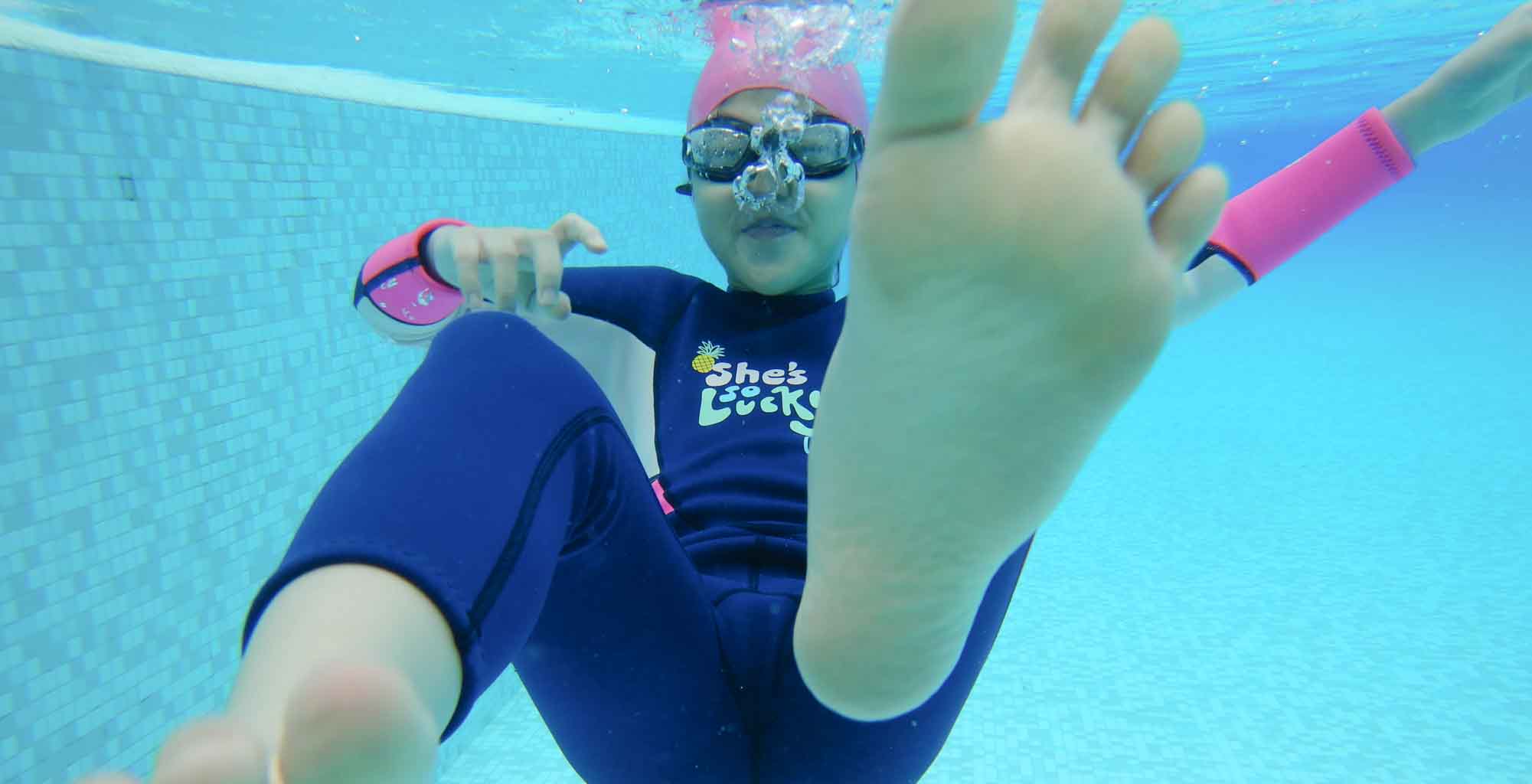
People had seen videos of lifeguards jumping into a community pool to save kids who were in trouble when the pool was full, and no one else saw the child in trouble.
It’s true that drowning doesn’t look like drowning, at least not in the movies, but that’s true. Most of the time, there isn’t a lot of commotion and wildly flapping arms. Lifeguards are trained to look for signs that someone is going to drown.
As a parent, you can learn about drowning, so you know what to do when someone is drowning, how to stay safe while swimming, and what dry drowning is.
In this video, we show you how to tell if someone is drowning.
Yelling isn’t heard. What do you think? You breathe and talk with the same body part.
Is it really possible for your body to stop breathing so you can yell and scream?
Nope. In the water, you can’t scream when you can’t breathe. That’s why drowning can be very quiet.
No one is waving their arms in a frantic way. During deep water, what happens when you don’t use your hands to swim or paddle and raise them in the air at the same time?
You start to sink. To get help when you’re drowning, you don’t have time to be frantic about waving your arms around. You’re using all your energy and your arms to stay above water.
There is a lot of “ladder” kicking going on. When your body wants to get out of the water, it looks like you’re climbing a ladder to do it. When someone is trying very hard to move in the water but doesn’t seem to be getting anywhere, there’s likely something wrong.
Also, a black look might be a sign. When we’re in trouble, we block out all the noise and distractions around us so we can focus on saving ourselves. If someone is drowning, you’ll see a blank or glassy look even if everything else looks fine (or maybe even closed eyes).
Water comes up to their mouth. It is very dangerous for someone who is drowning to keep their mouth under the water.
When someone may be drowning, what should we do?
When you ask, “Are you OK?” and wait for a verbal answer, say, “OK.” A slight head nod isn’t enough. For now, the person can get a breath. If there is no sound, that means the person is drowning.
Call the police. Your focus here is on time, and you need to be quick.
When you’re done, throw in a float. Even though someone who is drowning might not be able to grab it, someone who is in trouble might be able to.
- Grab a life jacket for yourself and the drowning person. If you find yourself drowning, you will be of no assistance. Make sure you have a floating device for yourself in case the person who is drowning tries to drag you down with him or her.
- Keep the victim’s head above the water and head for safety.
When someone else drowns, they are called “secondary drowning.”
When your child drowns, you might also be worried about something called “secondary drowning,” which is even scarier.
Secondary drowning: What is it? As a good thing, secondary drowning is when water gets into the lungs (where it shouldn’t be). Make sure that you get the right medical help if your child is in trouble in the water and has to be pulled out for near-drowning.
What will happen if my child eats water? During swimming, we’ve all swallowed some water (or eaten fish, as we say at Friendly Dolphin Swim School). Most of the time, this is not a big deal. A cough and everything is fine.
It’s when the coughing is long-lasting, persistent, and getting more difficult that you should get medical help right away. Call or go to the doctor right away if your child is more tired than usual or a little “foggy” after a near-drowning accident.
What is dry drowning or secondary drowning?
One of them was “dry drowning,” or “secondary swimming,” which isn’t as well known as it should be.
We will also answer questions about secondary drowning and how it can be prevented.
The World Health Organization says that drowning is a process in which “respiratory problems are caused by submerged or immersed in liquid.”
The term “secondary drowning” is misleading because the respiratory problems that result aren’t caused by being submerged in water. Instead, they are caused by internal problems with the lung.
We don’t know that we’re drowning, but the lung fills up with our body fluids. However, many parents find the term “secondary drowning” very appealing because this condition is linked to swimming and maybe even a fight in the water.
Getting water into your lungs can cause damage or make you feel ill. When the lung doesn’t work well, the body’s natural response is to send more fluids to the lung (pulmonary edema), which makes it hard for air to get in and out of the body.
Also, it is thought that chlorinated water could cause inflammation in the lungs when it gets into the body. The body sends even more fluid to the lung to fight off this inflammation. This pulmonary edema can cause respiratory failure and heart failure.
Is there a way to tell if you’ve been secondary drowned?
If your child has swallowed water, keep an eye out for these signs and symptoms.
- If you have difficulty breathing, you might have labored breathing or shallow and quick breaths.
- A cough that doesn’t sound like a normal one
- Unusual tiredness or lethargy (a possible sign of inadequate oxygen supply)
- Slurred speech or other behaviour that isn’t typical of the child (e.g., loss of coordination, confusion, soiled underpants in a child that no longer needs diapers).
Q: Are young children more likely to drown again?
A: Anyone who breathes in water is at risk of having trouble with their lungs. Most kids who breathe in a bit of water while swimming will be fine. Someone’s body might have a hard time living hours later because of how their body reacts to water or something else irritating them.
Kids who aren’t good swimmers are thought to be more likely to get water in their lungs while swimming because they might not be able to keep their mouths above the water as adults would. Even though kids learn to control their breathing while swimming, they may be more likely than adults to mistakenly inhale underwater instead of out, allowing the water to get into their lungs.
Most of the time, the child will be fine. However, if your child has an accident in the water, parents should look for strange behavior after the accident.
Q: What should someone do if they think they have secondary drowning?
A: Time is crucial for survival. Parents should listen to their instincts and do what they think is best. Any time you think someone might have trouble breathing after swimming, especially after a fight in the water, you need to bring the child to see a doctor or call emergency and immediately get the child to the hospital. Helping a person breathe or get oxygen can help save their life.
It is important to know how to avoid “dry drowning.” Here are some of the steps you can take to prevent drowning.
•Be sure to keep an eye on your kids when they’re near water. People who don’t know how to swim should stay close to each other.
As a parent, you should teach your child to exhale underwater and inhale only when the child’s mouth comes out of the water.
• Children should take swim lessons. Swim instructors are trained to teach children how to breathe while also teaching them how to swim.
•Be on the lookout for strange behavior after a fight in the water, and call 995 or bring someone to see a doctor right away if you think someone is having trouble breathing.
It’s important to stay safe while swimming.
Always swim with a friend. It doesn’t matter what your age or skill level is. You should always swim with one or more people, no matter what.
To be safe, keep life-saving equipment close at hand.
A first aid kit, a life jacket, long poles for a pool, and more could be in there.
Keep a phone close by. Because you probably always have your phone close by when your kids are in the water, you should be ready to call 911 if something goes wrong.
Find out about CPR and how to do it. Every second is important in an emergency, and you’ll be able to help until medical help comes.
Make sure you can swim.
Make sure your kids know how to swim to stay safe in the water! It doesn’t matter if your child already knows how to swim. Even if they do, lessons are still very important for many reasons.
At Friendly Dolphin Swim School, you can learn to swim.
Swimming lessons are a great method to protect yourself from drowning, as well as others around you! Kids as young as four months can learn to swim with help from instructors who have integrity, compassion, and trust.
They use these things to teach kids how to swim. Look for the nearest place to you and sign up online today for a GOLDEN experience that you can be proud of!


